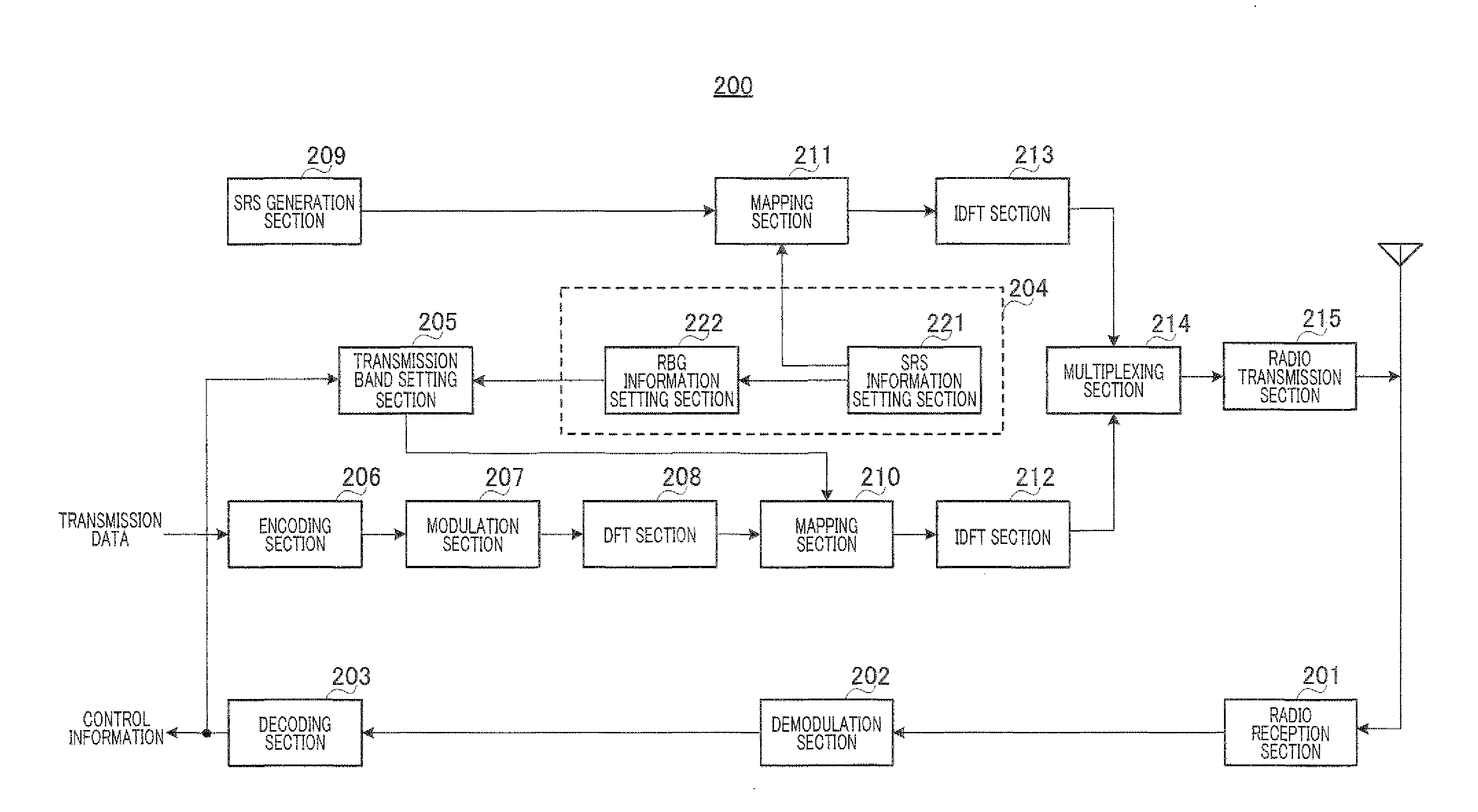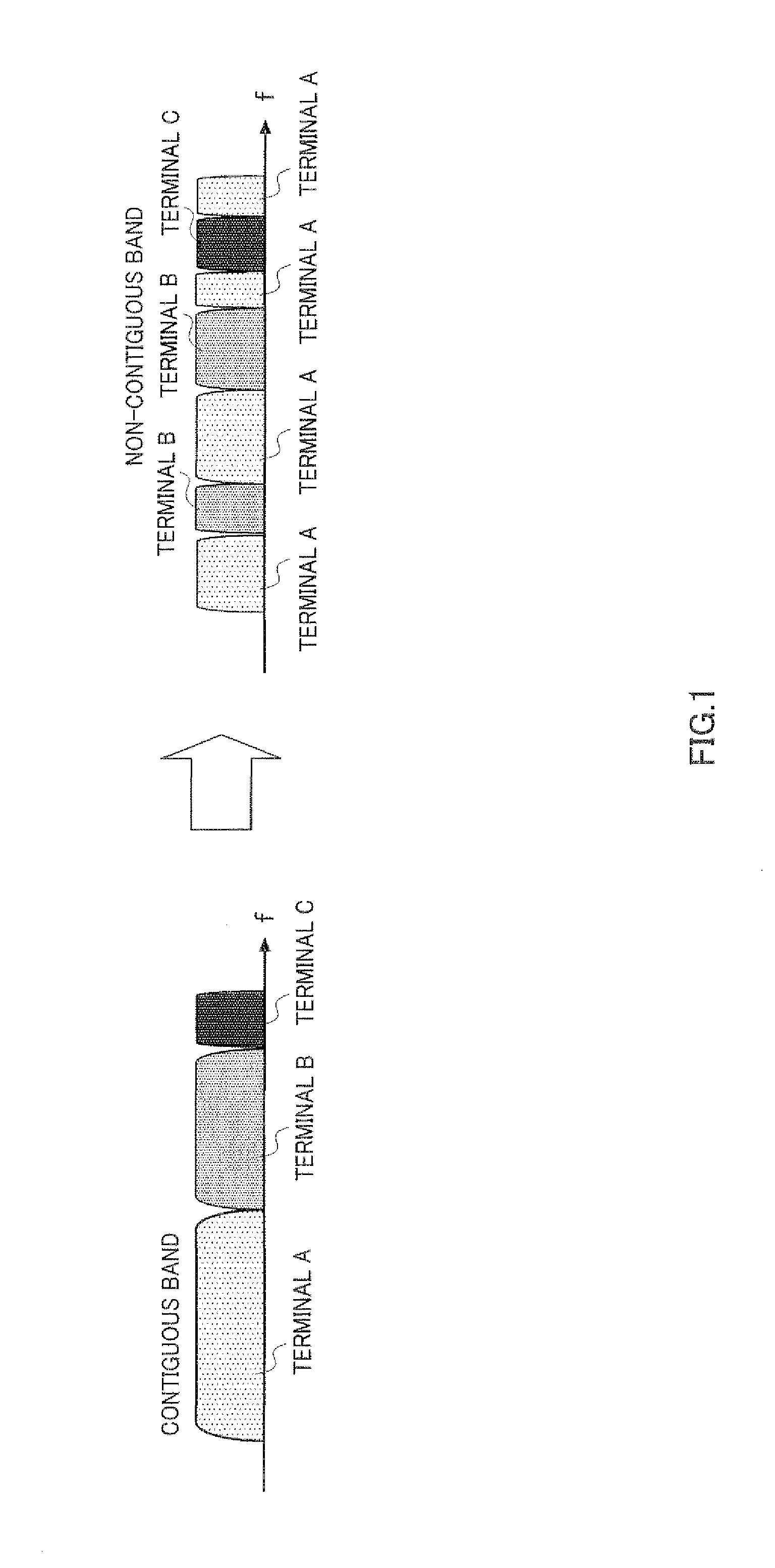Wireless base station apparatus, wireless terminal apparatus, frequency resource allocation method, and method of forming transmission signal
- Summary
- Abstract
- Description
- Claims
- Application Information
AI Technical Summary
Benefits of technology
Problems solved by technology
Method used
Image
Examples
embodiment 1
[0044]FIG. 6 is a block diagram showing a configuration of a base station apparatus 100 according to Embodiment 1 of the present invention. In FIG. 6, base station apparatus 100 includes radio reception section 101, demodulation section 102, SRS extraction section 103, CQI estimation section 104, assignment section 105, assignment unit setting section 106, control signal generation section 107, modulation section 108, and radio transmission section 109.
[0045]Radio reception section 101 performs reception processing, such as down-conversion and A / D conversion, on a signal received from terminal apparatus 200 (described later) via an antenna, and outputs the reception-processed signal to demodulation section 102.
[0046]Demodulation section 102 demodulates the signal received from radio reception section 101 and outputs the demodulated signal to SRS extraction section 103.
[0047]SRS extraction section 103 extracts an SRS transmitted from terminal apparatus 200 based on SRS information re...
embodiment 2
[0096]A case has been described with Embodiment 1 where the basic size of an RBG is determined by setting the sounding band as the standard, and an end of the RBG is made match an end of the sounding band. A case will be described with Embodiment 2 where by setting the basic size and the position of an RBG as the standard, the transmission bandwidth with which terminal apparatus 200 transmits an SRS at one timing is determined, and an end of the transmission band of that SRS is made match an end of an RBG.
[0097]FIG. 14 is a block diagram showing a configuration of base station apparatus 300 according to Embodiment 2 of the present invention. Base station apparatus 300 includes assignment unit setting section 301.
[0098]Assignment unit setting section 301 outputs SRS information containing information about the transmission bandwidth, the position of the transmission band, and the frequency hopping pattern with which terminal apparatus 400 (described later) transmits an SRS at one tim...
PUM
 Login to View More
Login to View More Abstract
Description
Claims
Application Information
 Login to View More
Login to View More - R&D
- Intellectual Property
- Life Sciences
- Materials
- Tech Scout
- Unparalleled Data Quality
- Higher Quality Content
- 60% Fewer Hallucinations
Browse by: Latest US Patents, China's latest patents, Technical Efficacy Thesaurus, Application Domain, Technology Topic, Popular Technical Reports.
© 2025 PatSnap. All rights reserved.Legal|Privacy policy|Modern Slavery Act Transparency Statement|Sitemap|About US| Contact US: help@patsnap.com



